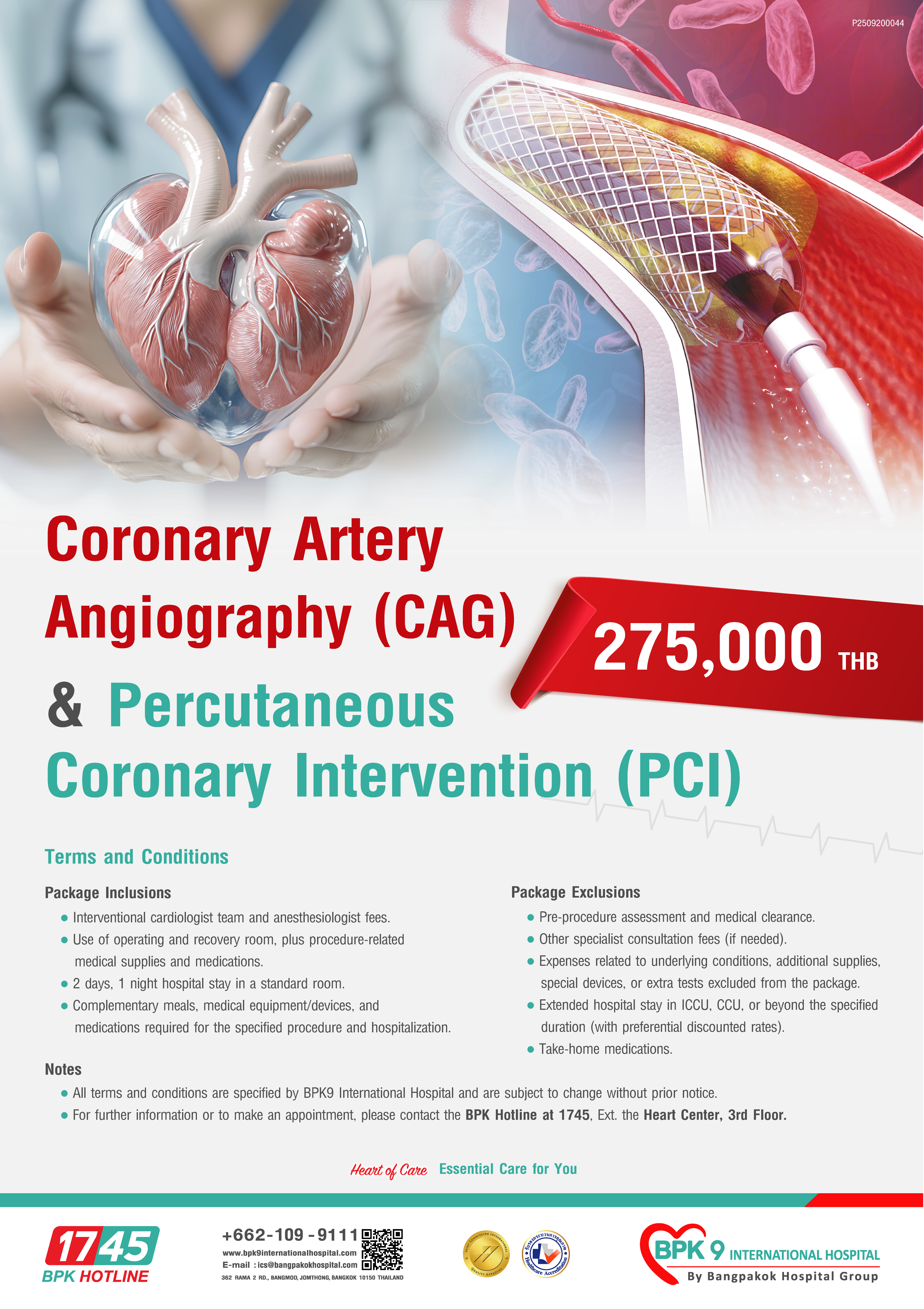Coronary Artery Angiography (CAG) & Percutaneous Coronary Intervention (PCI)

Coronary Artery Angiography (CAG) & Percutaneous Coronary Intervention (PCI)
Advanced Diagnosis and Treatment for Coronary Artery Disease
Heart disease often develops silently and can lead to serious complications if left undetected. Two of the most important procedures used in modern cardiology, Coronary Artery Angiography (CAG) and Percutaneous Coronary Intervention (PCI), work together to diagnose and treat narrowed or blocked heart arteries with precision, safety, and efficiency.
What Is Coronary Artery Angiography (CAG)?
Coronary Angiography is a minimally invasive imaging procedure that allows cardiologists to see inside the coronary arteries, the vessels that supply oxygen-rich blood to the heart muscle.
How It Works:
- A catheter is gently inserted through an artery in the wrist or groin.
- A contrast dye is released into the coronary arteries.
- Special X-ray imaging captures real-time views of blood flow and artery structure.
This detailed imaging helps cardiologists detect:
- Blockages or narrowing caused by plaque
- Blood flow restrictions
- Congenital or structural abnormalities
- Performance of previous stents or bypass grafts
CAG provides the clearest and most accurate diagnosis of coronary artery disease.
What Is Percutaneous Coronary Intervention (PCI)?
PCI, commonly known as angioplasty with or without stent placement, is a treatment performed to open narrowed or blocked arteries and restore healthy blood flow to the heart.
Steps of PCI:
- A small balloon is guided to the blocked area.
- The balloon is inflated to widen the artery.
- A stent (a tiny mesh tube) is often placed to keep the artery open.
In many cases, PCI can be performed immediately after CAG if a blockage is detected, avoiding the need for a separate procedure.
Key Benefits of CAG and PCI
✔ Early and Accurate Detection
CAG identifies artery problems with unmatched clarity, allowing cardiologists to act before serious complications occur.
✔ Immediate Treatment When Needed
PCI can be done right after diagnosis, often during the same session, reducing delays and improving outcomes.
✔ Prevention of Heart Attacks
By removing or reducing blockages, PCI lowers the risk of heart attacks and long-term cardiac damage.
✔ Minimally Invasive and Quick Recovery
Compared to open-heart surgery, these procedures require only a small entry point and involve minimal downtime.
✔ Symptom Relief and Quality of Life
Reduced chest pain, better exercise tolerance, and improved breathing are common results after treatment.
✔ Personalized, Targeted Care
The findings from CAG guide tailored treatment, whether medication, lifestyle adjustments, stenting, or surgery.
Who Should Consider CAG and PCI?
Cardiologists may recommend these procedures if you:
- Experience chest discomfort or pressure (angina)
- Have shortness of breath, fatigue, or dizziness
- Show abnormal results on a stress test, ECG, or echocardiogram
- Have symptoms of a possible heart attack
- Develop new or worsening symptoms despite treatment
- Need follow-up after stent placement or bypass surgery
You may also be at higher risk if you have:
- High blood pressure
- Diabetes
- High cholesterol
- A smoking history
- Obesity or inactivity
- Family history of heart disease
Preparation, Safety, and Aftercare
Before the Procedure:
- Fasting for a few hours may be required.
- Certain medications may need adjustment.
- Blood tests may be done to check kidney function and clotting.
Safety First:
CAG and PCI are widely performed and considered very safe when done by skilled specialists. Potential complications are rare and closely monitored by medical staff.
After the Procedure:
- Most patients return home the same day or after a short stay.
- The insertion area (wrist or groin) must be rested temporarily.
- Drinking water helps eliminate contrast dye.
- Light activities can resume within 1–2 days.
Seek medical attention if you notice:
- Persistent bleeding or swelling
- Unusual pain or numbness
- Fever or shortness of breath
- Chest discomfort after discharge
Coronary Artery Angiography (CAG) provides a clear diagnosis, while Percutaneous Coronary Intervention (PCI) offers fast and effective treatment, all with minimal invasiveness and maximum precision. Together, these procedures help prevent heart attacks, restore circulation, and protect long-term heart health.
Heart of Care, Essential Care for You

